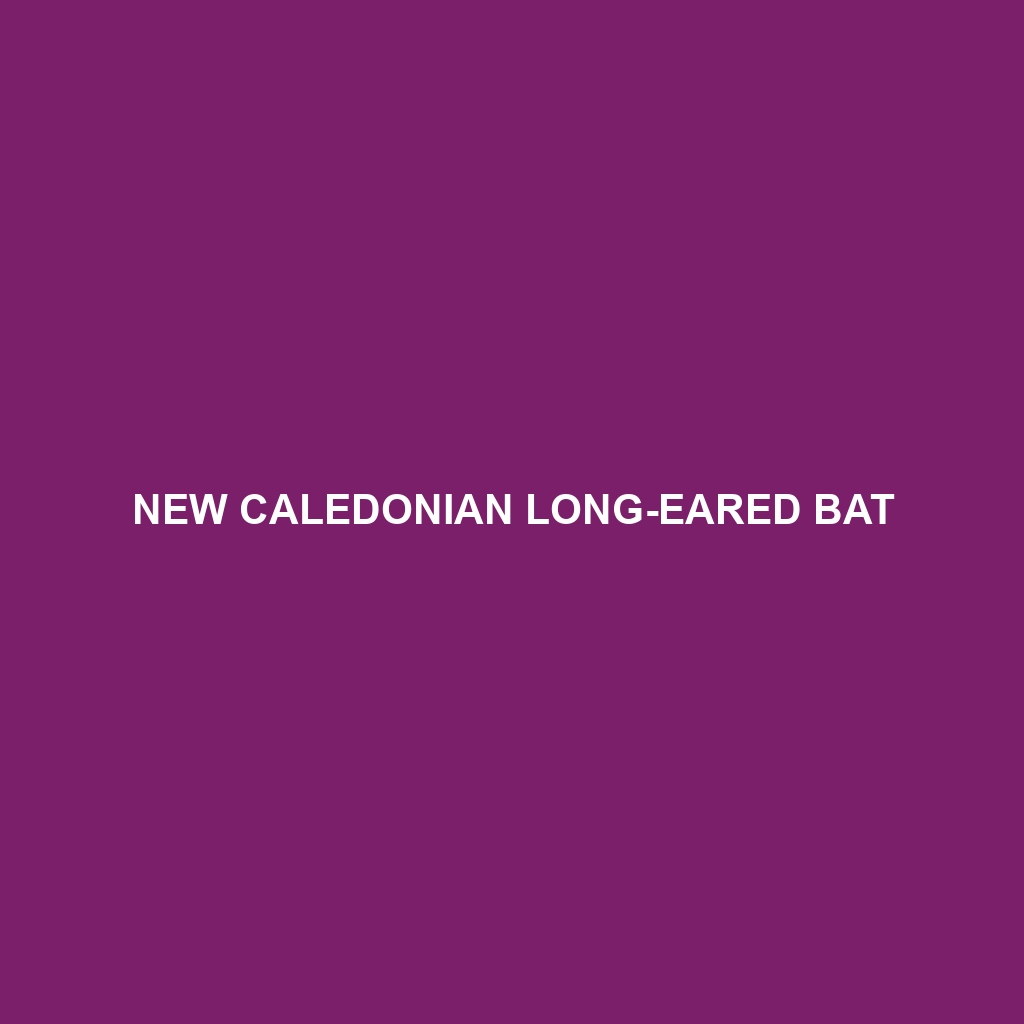New Caledonian Long-eared Bat
Common Name: New Caledonian Long-eared Bat
Scientific Name:
Habitat
The New Caledonian Long-eared Bat is primarily found in the lush endemic forests of New Caledonia, an archipelago in the South Pacific. This species thrives in humid coastal areas and subtropical forest ecosystems, often roosting in tree hollows and under foliage. Its distribution is largely confined to specific regions of Grande Terre, the main island of New Caledonia, where it prefers undisturbed habitats crucial for its survival.
Physical Characteristics
This medium-sized bat typically ranges from 8 to 10 cm in body length and possesses large, rounded ears that are adapted for echolocation. The fur color varies from dark brown to a reddish hue, providing camouflage against the forest backdrop. Distinctive features include a long snout and a wing span of up to 30 cm, which is advantageous for agile flight through dense vegetation.
Behavior
The New Caledonian Long-eared Bat is primarily nocturnal, foraging for food under the cover of darkness. It exhibits social behavior, often roosting in small colonies. During the night, it utilizes echolocation to navigate and hunt for prey, making it a highly efficient predator in its environment. Maternity roosting sites are often shared, with females caring for their young cooperatively.
Diet
This species feeds mainly on insects, particularly moths, beetles, and flies, capturing them mid-air during flight. The New Caledonian Long-eared Bat plays a crucial role in controlling insect populations, thus contributing to the health of its ecosystem. Its specific feeding habits make it an integral part of the food web in New Caledonian forests.
Reproduction
The breeding season for the New Caledonian Long-eared Bat typically occurs between late spring and early summer. Females give birth to one or two pups each year in communal roosts, ensuring increased survival rates through group warmth and protection. The young are nursed for several weeks before they begin to fly and fend for themselves.
Conservation Status
The New Caledonian Long-eared Bat is currently listed as endangered by conservation organizations due to habitat loss and environmental changes. Its restricted distribution makes it particularly vulnerable to deforestation and agricultural expansion, leading to concerns about its long-term survival.
Interesting Facts
One fascinating aspect of the New Caledonian Long-eared Bat is its unique echolocation calls, which are among the highest frequencies recorded in bats. Additionally, its roosting habits in tree hollows contribute to seed dispersal, aiding forest regeneration. This unique bat species has been the subject of studies focused on biodiversity in New Caledonia, emphasizing its importance in local ecosystems.
Role in Ecosystem
The New Caledonian Long-eared Bat plays a vital role in its ecosystem as a pollinator and a natural pest controller. By feeding on insects, it helps maintain healthy populations in the forest. Its foraging activities also support the growth of various plant species, thereby influencing the overall biodiversity of the region. The interactions between this bat and other species illustrate the complex interdependencies in its habitat.

